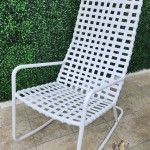Patio Furniture Cushion Storage Ideas
Protecting patio furniture cushions during the off-season is crucial for maintaining their appearance and longevity. Proper storage prevents mildew, fading from sun exposure, and damage from pests and weather. Choosing the right storage solution depends on available space, budget, and the climate.
Dedicated Cushion Storage Boxes
Specifically designed for outdoor cushions, these boxes offer excellent protection. They are typically made of durable, weather-resistant materials like resin or plastic, safeguarding cushions from rain, snow, and insects. Many feature locking mechanisms for added security and are available in various sizes to accommodate different cushion sets. Consider a box with wheels for easy mobility.
Deck Boxes as Versatile Storage
Deck boxes provide a dual-purpose solution, offering ample storage for cushions and other outdoor accessories. They are available in various materials, including wood, plastic, and resin. Wooden deck boxes offer a classic aesthetic but require regular maintenance to prevent weathering. Resin and plastic options are more low-maintenance and often more affordable. When selecting a deck box, ensure it is large enough to hold all cushions comfortably without compressing them.
Utilizing Indoor Storage Spaces
If outdoor storage is limited, consider utilizing indoor spaces like a garage, basement, or attic. Before storing cushions indoors, ensure they are thoroughly cleaned and dried to prevent mildew growth. Storing cushions in airtight containers or heavy-duty plastic bags provides extra protection from dust and pests. Clearly label containers to easily identify the contents.
Repurposing Storage Bins and Totes
Large storage bins and totes offer a cost-effective storage solution. Opt for heavy-duty, weather-resistant bins with secure lids. These can be stored in a garage, shed, or even under a covered patio area. Adding cedar chips or lavender sachets inside the bins can help deter pests and keep cushions smelling fresh.
Creating Custom Storage Solutions
For those with DIY skills, creating custom storage solutions offers a tailored approach. Building a storage bench or incorporating storage under an existing deck can maximize space utilization. Ensure any custom-built storage is adequately ventilated and protected from the elements to prevent moisture buildup.
Furniture Covers for Partial Protection
While not ideal for long-term storage, furniture covers can offer partial protection during the season when cushions are not in frequent use. Waterproof and UV-resistant covers can shield cushions from rain and sun damage. Ensure the covers are properly secured to prevent them from blowing away in windy conditions. Regularly airing out the cushions underneath the covers will prevent moisture buildup and mildew growth.
Vertical Storage Techniques
For limited storage space, consider vertical storage options. Specialized cushion storage racks or even repurposed shelving units can be used to store cushions upright. This method helps to maximize space and improve air circulation, preventing mildew. Ensure cushions are clean and dry before storing them vertically.
Vacuum Sealing for Compact Storage
Vacuum sealing can significantly reduce the volume of cushions, making them easier to store. Use specialized vacuum bags designed for large items and a strong vacuum cleaner. This method is particularly helpful for storing bulky cushions in smaller spaces. Be mindful that compressing cushions for extended periods can potentially affect their loft over time.
Protecting Cushions from Pests
Regardless of the chosen storage method, protecting cushions from pests is essential. Clean cushions thoroughly before storing them and consider using pest repellents like cedar chips, lavender sachets, or mothballs. Regularly inspect stored cushions for signs of pest activity and take appropriate action if necessary.
Considering Climate Conditions
The local climate should be a factor in choosing a storage solution. In areas with heavy rainfall or snow, waterproof storage containers are essential. In humid climates, ensuring adequate ventilation is crucial to prevent mildew. For areas with extreme temperature fluctuations, storing cushions indoors is often the best option to protect them from damage.

Outdoor Cushion Storage Shed Diy And Done The Inspired Room

This Is A Neat Idea I Had Come Up With Hanging Hooks From The Ceiling And Your Patio Chair Garage Storage Systems Cushion

Outdoor Cushion Storage Shed Diy And Done The Inspired Room

17 Shed Organization Ideas To Keep Your Outdoor Supplies Neat And Tidy Patio Furniture Cushion Storage
:max_bytes(150000):strip_icc()/sandandsisal-ad956a244b5d4eaeb7d4aee07d0ed4c3.jpg?strip=all)
Diy Outdoor Storage Ideas

Outdoor Cushion Storage With Cover Patio Furniture Cushions

How To Outdoor Cushions 4 Easy Steps
:max_bytes(150000):strip_icc()/nelidesign-6f102100497b462fbcedc689c588d523.jpg?strip=all)
Diy Outdoor Storage Ideas

15 Best Outdoor Storage Solutions 2024

Patio Cushion Storage Ideas On Foter In 2024 Furniture Outdoor Bench
See Also








